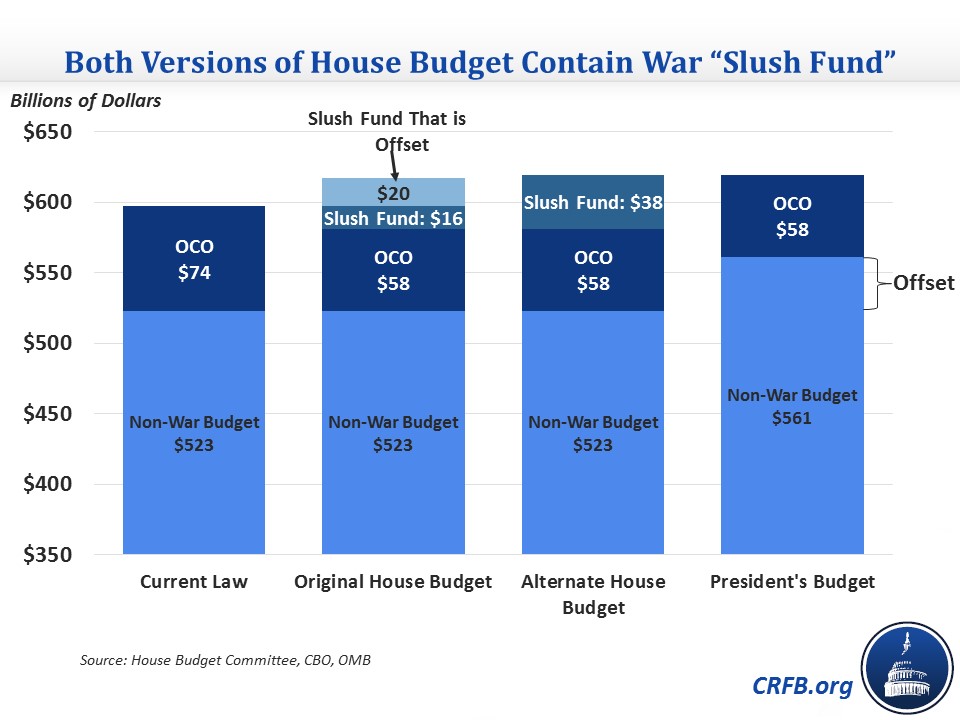Two Budgets Enter, One Budget Will Leave
In order to resolve disagreement between defense hawks and fiscal hawks, the House will vote on two competing budgets with different approaches to funding for Overseas Contingency Operation spending (also known as OCO or war spending) and offsets. Neither of these versions is responsible, but one is more irresponsible than the other.
The first and less irresponsible version is the original House budget provision, which would provide $94 billion for OCO, $36 billion above the President's request for FY 2016 and $20 billion above the current level of $74 billion. This increase fills in almost all of the difference in the non-war defense budgets between the House and the President, thus creating a slush fund to slip normal defense spending into the war category. This would effectively provide the same amount of sequester relief for defense spending for next year while purporting to comply with the sequester caps on paper. However, the budget does require that the $20 billion of spending above current law be offset, so it at least partially pays for this increase.

As potentially irresponsible as this approach is, it is not as bad as the alternative, which would eliminate the requirement that the $20 billion in spending above the FY15 level be offset. This approach is counterproductive in both legitimizing the use of OCO as a slush fund and undermining the principle that sequester relief must be offset by savings elsewhere in the budget.
Under the procedure for consideration of the budget resolution, there will be votes on both the text of the budget resolution reported by the Budget Committee and the version deleting the requirement that part of the increased spending for OCO be offset with other spending cuts, with the version which receives the most votes winning if both receive a majority (if neither version receives a majority, the original resolution reported by the Budget Committee would remain in place). If the House rejects the resolution reported by the Budget Committee and approves the alternative dropping the requirement for offsets of higher defense spending, it will send a discouraging message about the willingness to hold the line on spending limits imposed by sequestration or offset any sequester relief with savings elsewhere in the budget.
The budget would ideally take neither of these approaches and instead set OCO at the President's request of $58 billion as the original Senate budget did (but then backtracked on). Absent that, they could adopt language considered last year and offered as an amendment during Budget Committee consideration of the budget by Ranking Member Chris Van Hollen (D-MD) to ensure that only directly-related war spending could qualify for the OCO designation, which itself would significantly reduce the ability of appropriators to increase OCO up to the $94 or $96 billion limit. Either of these enforcement options combined with caps on future war spending would be helpful in ensuring the integrity of the budget process and the spending caps.


